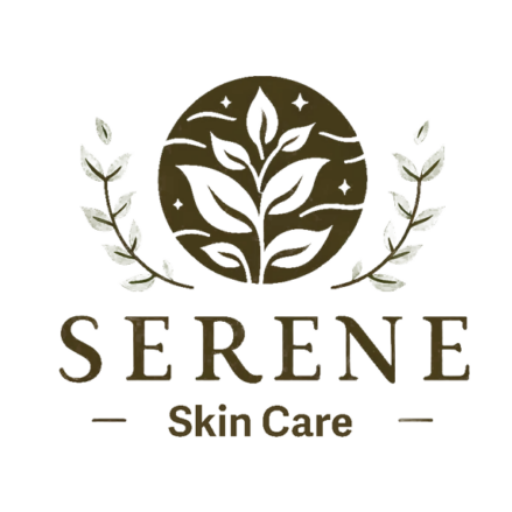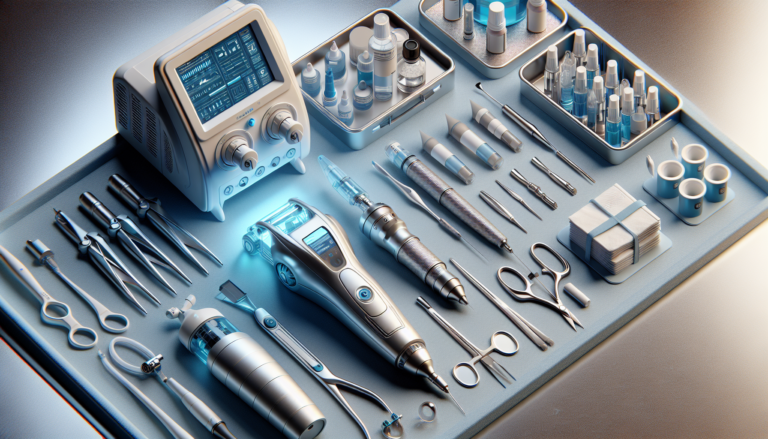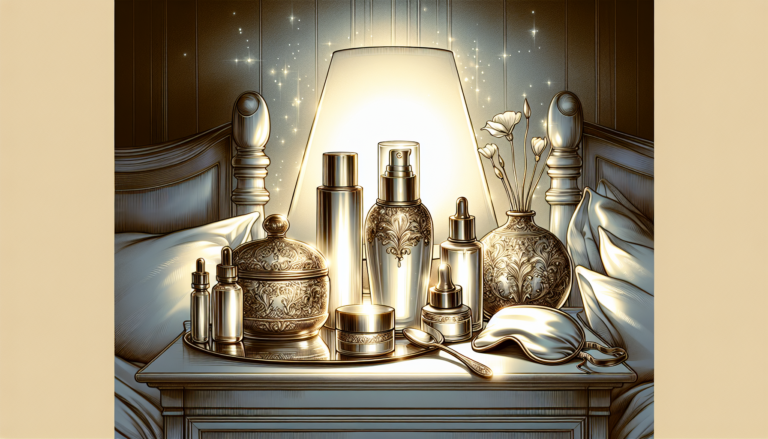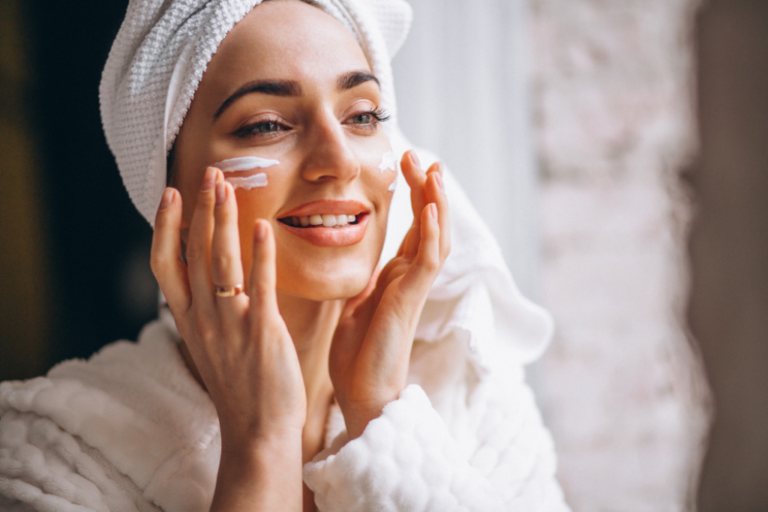Acne is a common skin condition that affects millions of people worldwide, causing discomfort and distress. In this article, we will explore advanced techniques for managing acne-prone skin. From innovative skincare products to expert tips and tricks, readers will discover effective ways to address their skin concerns and achieve clearer, healthier skin. Whether you’re a skincare enthusiast or someone struggling with acne, this article aims to provide valuable insights and solutions to help you on your journey to clearer, more confident skin.
Understanding Acne-Prone Skin
Acne is a common skin condition that affects millions of people worldwide. It is characterized by the presence of pimples, blackheads, whiteheads, and sometimes painful cysts. Understanding the causes and types of acne is crucial in developing an effective skincare routine to manage and prevent breakouts.
Causes of Acne
Acne is primarily caused by overactive oil glands, which produce excessive sebum. When this sebum combines with dead skin cells and clogs the pores, it creates an ideal environment for bacteria to thrive, leading to inflammation and the formation of acne lesions. Hormonal fluctuations, such as those during puberty, can also contribute to the development of acne.
Various factors can exacerbate acne, including certain medications, exposure to high levels of humidity or pollution, and an unhealthy diet high in refined sugars and processed foods. Stress and inadequate sleep can also play a role in acne flare-ups.
Types of Acne
Acne can manifest in different forms, ranging from mild to severe. Some common types of acne include:
-
Whiteheads: These are closed comedones that appear as small, flesh-colored bumps on the skin’s surface. They occur when the follicles become blocked with oil and dead skin cells, trapping them beneath the skin.
-
Blackheads: Blackheads, also known as open comedones, are similar to whiteheads but have larger openings. The dark appearance is not due to dirt but rather the oxidation of the trapped oils and dead skin cells.
-
Papules: These are small, raised, and red bumps on the skin. They occur when the walls of the clogged hair follicles break down due to inflammation.
-
Pustules: Pustules are similar to papules but contain pus at their tips. They appear as red bumps with a white or yellow center and can be tender or painful.
-
Nodules: Nodules are larger, solid, and painful bumps that occur deep within the skin. They result from the buildup of oil, bacteria, and dead skin cells. Nodules often require professional treatment.
-
Cysts: Cysts are severe and painful acne lesions that are filled with pus. They are deep, pus-filled lumps that can cause scarring if not properly treated.
Factors that Aggravate Acne
While the exact causes of acne can vary from person to person, certain factors can worsen or trigger breakouts. These include:
-
Skincare products: Using harsh or comedogenic (pore-clogging) products can aggravate acne-prone skin. It is essential to choose non-comedogenic products that do not block the pores.
-
Diet: Consuming a diet high in refined sugars, processed foods, and dairy products can increase inflammation and sebum production, leading to more frequent breakouts.
-
Stress: High levels of stress can stimulate the production of hormones like cortisol, which can increase oil production and inflammation in the skin.
-
Humidity and pollution: Living in humid environments or being exposed to pollution can clog the pores and exacerbate acne symptoms.
-
Medications: Certain medications, such as corticosteroids or hormones, can contribute to acne breakouts as a side effect.
Building a Skincare Routine
Establishing a proper skincare routine is crucial for effectively managing and preventing acne breakouts. This routine should incorporate cleansing techniques, choosing the right products, and incorporating exfoliation methods.
Cleansing Techniques
Gentle cleansing is key for acne-prone skin. Over-cleansing or using harsh cleansers can strip the skin of its natural oils, leading to increased oil production and potential breakouts. Opt for a mild, non-comedogenic cleanser that removes dirt, excess oil, and impurities without causing irritation.
When cleansing, use lukewarm water and gently massage the cleanser into the skin using circular motions. Avoid harsh scrubbing or using abrasive tools, as this can cause skin irritation and inflammation.
Choosing the Right Products
When selecting skincare products for acne-prone skin, it is crucial to look for non-comedogenic and oil-free formulas. These products are specifically designed not to clog the pores and cause further breakouts. Certain ingredients like salicylic acid or benzoyl peroxide can also be beneficial for treating acne.
In addition to cleansers, consider incorporating a toner into your skincare routine. Toners can help balance the skin’s pH levels and remove any remaining impurities. Look for alcohol-free toners to avoid drying out the skin.
Moisturizers are essential for maintaining adequate hydration and protecting the skin’s natural barrier. Look for lightweight, non-comedogenic moisturizers that won’t clog the pores. Additionally, consider using a separate sunscreen to protect your skin from harmful UV rays.
Exfoliation Methods
Exfoliation is an important step in any skincare routine, as it helps remove dead skin cells and unclogs pores, preventing the formation of acne lesions. However, it is essential to approach exfoliation with caution, as overdoing it can irritate the skin and worsen acne.
Opt for chemical exfoliants containing ingredients like alpha-hydroxy acids (AHAs) or beta-hydroxy acids (BHAs). These gentle exfoliants work by dissolving dead skin cells and unclogging pores. Start with a lower concentration and gradually increase as tolerated by the skin.
Mechanical exfoliation, such as using a scrub or brush, can be too abrasive for acne-prone skin and cause irritation. If you prefer mechanical exfoliation, opt for gentle tools and avoid excessive pressure.
Managing Acne with Topical Treatments
Topical treatments can be effective in managing acne, either over-the-counter (OTC) or through prescription medication. It is essential to understand the different options available and consult with a dermatologist to determine the most suitable treatment plan.
Over-the-Counter (OTC) Treatments
OTC treatments are readily available without a prescription and can be an excellent first choice for mild to moderate acne. Common OTC acne treatments include:
-
Benzoyl Peroxide: Benzoyl peroxide helps kill acne-causing bacteria, reduces inflammation, and unclogs pores. It is available in various strengths and forms, such as cleansers, creams, gels, and spot treatments.
-
Salicylic Acid: Salicylic acid is a beta-hydroxy acid that helps exfoliate dead skin cells and unclog pores. It is often found in cleansers, toners, and spot treatments.
-
Sulfur: Sulfur has antimicrobial properties and helps reduce inflammation. It is commonly found in creams, ointments, and masks.
OTC treatments may take several weeks to show results, and it is important to follow the instructions carefully to avoid irritation.
Prescription Medications
In cases where OTC treatments are not sufficient, a dermatologist may prescribe stronger medications, tailored to the severity of the acne. These may include:
-
Topical Retinoids: Topical retinoids, such as tretinoin or adapalene, are derived from vitamin A and help unclog pores, reduce inflammation, and promote cell turnover. They can be effective for treating acne and improving overall skin texture.
-
Topical Antibiotics: Topical antibiotics, like clindamycin or erythromycin, help reduce bacteria on the skin’s surface and prevent infection. These medications are often combined with other acne treatments to enhance their effectiveness.
-
Combination Therapy: Combination therapies involve using multiple medications to target different aspects of acne. For example, a dermatologist may prescribe a combination of a topical retinoid and benzoyl peroxide or topical antibiotics.
Prescription medications may have more side effects compared to OTC treatments and should be used under the guidance of a dermatologist.
Alternative Options
In addition to traditional topical treatments, there are alternative options that can be explored for managing acne-prone skin. These include:
-
Tea Tree Oil: Tea tree oil has natural antimicrobial properties and can help reduce inflammation and kill acne-causing bacteria. It should be used with caution and in diluted form.
-
Natural Remedies: Some individuals find relief from acne symptoms with natural remedies like aloe vera, honey, or green tea. While these remedies may provide some benefits, it is important to note that scientific evidence supporting their effectiveness is limited.
Alternative options may work for some individuals but may not be suitable for everyone. It is advisable to consult with a dermatologist or healthcare professional before trying alternative treatments.
Exploring Advanced Therapies
For individuals with severe or persistent acne that does not respond adequately to topical treatments, advanced therapies may be considered. These treatments, typically performed by dermatologists or skincare professionals, can provide more targeted and intensive solutions.
Chemical Peels
Chemical peels involve applying a chemical solution to the skin to remove the outermost layer, promoting cell turnover and unclogging pores. They can help improve acne, reduce scarring, and even out skin tone. Chemical peels can vary in strength, and the type used will depend on the individual’s specific needs and skin type.
Microdermabrasion
Microdermabrasion is a non-invasive procedure that uses tiny crystals or a diamond-tipped wand to gently exfoliate the skin. It helps remove dead skin cells, unclog pores, and improve the appearance of acne scars. Microdermabrasion is a relatively mild treatment and may require multiple sessions for optimal results.
Laser Therapy
Laser therapy utilizes laser technology to target acne-causing bacteria, reduce inflammation, and stimulate collagen production. It can be effective in treating acne, reducing the appearance of acne scars, and improving overall skin texture. Laser therapy may require multiple treatment sessions and should be performed by a qualified professional.
Advanced therapies often produce more noticeable results but may involve longer recovery times and potentially higher costs. It is important to consult with a dermatologist or skincare professional to determine if advanced therapies are suitable.
Incorporating Professional Treatments
For individuals who prefer professional expertise in managing their acne, various in-office treatments can be considered. These treatments are performed by dermatologists and skincare professionals and can provide targeted solutions for stubborn acne.
Extraction
Extraction involves manually removing comedones, pustules, and other acne lesions to alleviate pressure and reduce inflammation. It is typically performed by a dermatologist or an aesthetician using sterile instruments. While it can be effective, extraction should only be done by professionals to avoid scarring or infection.
Photodynamic Therapy
Photodynamic therapy (PDT) combines a photosensitizing agent with light therapy to target and destroy acne-causing bacteria. After applying the photosensitizing agent to the skin, a specific wavelength of light is used to activate the agent and kill the bacteria. PDT can be effective for severe or resistant acne and may require multiple sessions.
Cortisone Injections
Cortisone injections are a quick and effective solution for reducing inflammation and swelling associated with cystic acne. A dermatologist injects a small amount of cortisone into the acne cyst, which helps shrink it and alleviate pain. Cortisone injections can provide rapid relief but are typically reserved for severe or painful cystic lesions.
Professional treatments offer more immediate and potent solutions for managing acne. However, they should be performed by qualified professionals and tailored to individual needs and skin conditions.
Dietary and Lifestyle Modifications
In addition to skincare and professional treatments, certain dietary and lifestyle modifications can help improve acne-prone skin. Addressing these factors can contribute to overall skin health and reduce the frequency and intensity of acne breakouts.
Impact of Diet on Acne
While the relationship between diet and acne is complex and varies from person to person, some studies suggest that certain foods may influence acne development. It is advisable to monitor your diet and observe whether specific foods, such as dairy, high-glycemic foods, or processed sugars, worsen your acne. Adopting a balanced diet rich in fruits, vegetables, whole grains, and lean proteins may support skin health.
Managing Stress Levels
Stress is known to impact various aspects of health, including skin health and acne. High levels of stress can stimulate the production of hormones like cortisol, leading to increased inflammation and sebum production in the skin. Engaging in stress-reducing activities, such as exercise, meditation, or hobbies, can help manage stress levels and potentially reduce acne breakouts.
Exercise and Acne
Regular exercise has numerous benefits for overall health, including potential positive effects on acne-prone skin. Exercise promotes blood circulation, which can improve the delivery of oxygen and nutrients to the skin. Sweating during exercise can also help unclog pores, but it is important to cleanse the skin properly afterward to avoid trapping sweat and bacteria.
Understanding Hormonal Influence
Hormonal fluctuations can significantly impact the health of the skin, specifically in the development of hormonal acne. Understanding the role of hormones in acne and the available treatments can help individuals effectively manage and treat hormonal acne.
Effect of Hormones on Skin Health
Hormonal imbalances, such as those during puberty, menstrual cycles, or hormonal disorders, can trigger the overproduction of sebum and increase the risk of acne. Androgens, particularly testosterone, play a role in stimulating sebum production, which can clog the pores and lead to breakouts.
Hormonal Acne Treatments
Hormonal acne treatment options primarily focus on regulating hormonal imbalances and reducing sebum production. The most common hormonal acne treatment is oral contraceptives, which can help stabilize hormone levels and control acne in women. Other medications, such as spironolactone or low-dose oral corticosteroids, may be prescribed by a dermatologist to manage hormonal acne.
It is crucial to consult with a healthcare professional to determine the most appropriate treatment plan for hormonal acne, considering factors such as age, gender, and overall health.
Oral Contraceptives and Acne
Oral contraceptives, commonly known as birth control pills, are a common treatment option for hormonal acne in women. Certain oral contraceptives containing both estrogen and progestin can help regulate hormone levels, reduce sebum production, and minimize acne breakouts.
However, it is important to note that not all oral contraceptives are equally effective for treating acne, and they may have potential side effects. A healthcare professional can guide individuals in selecting the right oral contraceptive for their specific acne concerns.
Addressing Post-Acne Scarring
Even after successfully managing acne breakouts, some individuals may be left with post-acne scarring. These scars can be distressing, but there are various treatments available to improve their appearance.
Types of Acne Scarring
Acne scarring can present in different forms, including:
-
Ice Pick Scars: These are narrow, deep scars that resemble small puncture marks on the skin.
-
Rolling Scars: Rolling scars are broad, shallow indentations that give the skin a wavy or uneven texture.
-
Boxcar Scars: Boxcar scars are wider and have defined edges. They appear as shallow depressions with vertical sides, resembling a box.
-
Hypertrophic Scars: Hypertrophic scars result from excessive collagen production during the healing process. They appear as raised, thickened areas on the skin.
Topical Treatments for Scarring
Topical treatments can help improve the appearance of acne scars, although they may not completely eliminate them. Some common topical treatments include:
-
Retinoids: Topical retinoids can help promote collagen production and improve the texture and appearance of acne scars.
-
Vitamin C: Vitamin C has antioxidant properties and can help fade hyperpigmentation and enhance skin healing.
-
Scar creams/gels: Over-the-counter scar creams or gels containing ingredients like silicone or onion extract can help soften and smooth the appearance of scars.
Topical treatments typically require consistent and prolonged use to see noticeable results. However, for deeper or more severe scarring, professional treatments may be necessary.
Professional Scarring Treatments
Various professional treatments can significantly improve the appearance of acne scars. These treatments should ideally be performed by dermatologists or skincare professionals trained in scar revision techniques. Some common professional treatments include:
-
Dermal Fillers: Dermal fillers can be used to fill in depressed acne scars, making them less noticeable. These fillers plump up the skin and provide a smoother appearance.
-
Microneedling: Microneedling involves using fine needles to create tiny punctures in the skin, stimulating collagen production and promoting skin rejuvenation. It can help improve the texture and appearance of acne scars.
-
Laser Resurfacing: Laser resurfacing uses laser technology to remove the outer layers of the skin, promoting collagen production and reducing the appearance of acne scars. It can be particularly effective for deep or severe scarring.
Professional scarring treatments may require multiple sessions and have varying downtime and recovery periods. A dermatologist or skincare professional can recommend the most suitable treatment option based on individual scarring concerns.
Preventing Acne Breakouts
Implementing preventative measures can significantly reduce the frequency and severity of acne breakouts. By adopting proper skincare habits, protecting the skin, and avoiding irritants, individuals can help maintain clearer and healthier skin.
Proper Skincare Habits
Consistency is key when it comes to proper skincare habits. Establishing a daily routine that includes gentle cleansing, moisturizing, and using non-comedogenic products can help prevent breakouts. It is important to avoid over-cleansing or excessive scrubbing, as this can irritate the skin and cause more harm than good.
Additionally, make sure to remove makeup before going to bed using a suitable makeup remover or cleanser. Leaving makeup on overnight can clog the pores and lead to breakouts.
Protecting the Skin
Protecting the skin from external factors can minimize the risk of acne breakouts. Some important protective measures include:
-
Sun Protection: Apply sunscreen with an appropriate SPF to protect the skin from harmful UV rays. Look for non-comedogenic and broad-spectrum sunscreens that won’t clog the pores.
-
Avoid Touching the Face: Touching the face with dirty hands can transfer bacteria and dirt to the skin, potentially causing breakouts. Try to avoid touching the face unnecessarily and wash hands regularly.
-
Cleanse After Sweating: After engaging in physical activity or sweating, it is important to cleanse the skin thoroughly to remove sweat and bacteria that could lead to breakouts.
Avoiding Irritants
Certain irritants can exacerbate acne-prone skin and lead to breakouts. It is important to identify and avoid potential triggers, such as:
-
Harsh Cleansers: Avoid using harsh cleansers or those that contain scrubbing particles, as they can strip the skin of its natural oils and cause irritation.
-
Heavy, Comedogenic Makeup: Opt for non-comedogenic and oil-free makeup products to minimize the risk of clogged pores.
-
Friction and Pressure: Avoid wearing tight-fitting clothing or accessories that rub against the skin, as they can cause irritation and worsen existing acne.
By being mindful of these irritants, individuals can reduce the likelihood of acne breakouts and maintain healthier skin.
Managing Acne in Different Seasons
Managing acne-prone skin can present unique challenges depending on the season. Understanding how seasonal factors can affect the skin and making necessary adjustments to the skincare routine can help maintain clearer skin year-round.
Winter Skincare Tips
During the winter months, the skin tends to become drier due to cold temperatures, low humidity levels, and indoor heating. To manage acne-prone skin in winter:
-
Moisturize: Apply a hydrating moisturizer to combat dryness and maintain adequate hydration levels. Look for oil-free or non-comedogenic formulas.
-
Protect from Harsh Weather: Wear appropriate clothing, such as scarves or hats, to protect the skin from cold winds and extreme temperatures. This can help prevent irritation and potential breakouts.
-
Avoid Hot Showers: Although tempting, hot showers can strip the skin of its natural oils, leading to increased oil production and potentially more breakouts. Opt for lukewarm showers and keep them brief.
Summer Skincare Tips
In summer, increased sweat production and exposure to UV rays can potentially worsen acne symptoms. To manage acne-prone skin in summer:
-
Use Lightweight Products: Switch to lighter, oil-free or gel-based products that won’t feel heavy on the skin and potentially clog the pores.
-
Sun Protection: Apply broad-spectrum sunscreen with a suitable SPF to protect the skin from damaging UV rays. Sweat and excess oil can make sunscreen less effective, so reapply frequently, especially after swimming or excessive sweating.
-
Keep Skin Clean: Regularly cleanse the skin to remove sweat, dirt, and excess oil that can accumulate during hot summer days. Consider using a gentle cleanser formulated for acne-prone skin.
Transitioning Skincare Routines
During seasonal transitions, it is important to adapt the skincare routine to meet the changing needs of the skin. As weather and temperature fluctuations occur, consider making the following adjustments:
-
Gradual Product Changes: When transitioning from one season to another, gradually introduce new products or adjust their usage. Sudden and drastic changes can potentially irritate the skin.
-
Assess Your Skin’s Needs: Pay attention to any changes in your skin, such as increased oiliness or dryness, and adjust the skincare routine accordingly. This may involve incorporating more hydrating products or adjusting the frequency of exfoliation.
-
Consult a Dermatologist: If you are unsure about the necessary changes to your skincare routine during seasonal transitions, seek guidance from a dermatologist. They can provide personalized recommendations based on your specific skin concerns.
By adapting the skincare routine to seasonal changes, individuals can effectively manage acne-prone skin throughout the year and minimize potential flare-ups.
In conclusion, understanding the causes and types of acne is crucial in developing an effective skincare routine for managing and preventing breakouts. By incorporating proper cleansing techniques, choosing suitable products, and addressing specific factors that aggravate acne, individuals can establish a foundation for better skin health. Topical treatments, both over-the-counter and prescription, offer different options for managing acne, while advanced therapies and professional treatments provide more specialized approaches. Additionally, dietary and lifestyle modifications, addressing hormonal influences, and managing post-acne scarring are important aspects to consider. By implementing preventative measures and adapting the skincare routine to different seasons, individuals can take proactive steps in managing acne-prone skin and achieving a clearer complexion.







